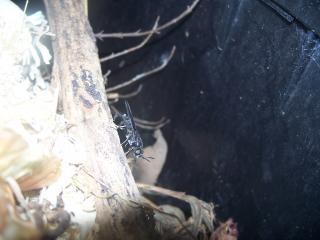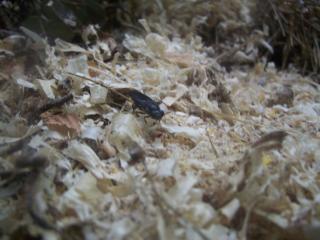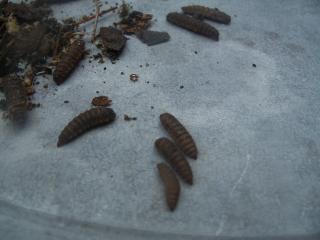Quote:
If any of those animals can find and get to the larvae they will eat them. Surprisingly I haven't heard of a specific incident. I've kept BSF units in woods with a known raccoon population but for some reason they left it alone.
Quote:
I only recommend adding animal products to a dense collection of BSF larvae, and then only what they can eat in a day. It's definitely not a good idea to use it as bait for the reason you mention.
The corn I use as an attractant is dried whole kernels soaked in water until fermented. I like this because the sour smell is strong enough to be a beacon for BSF females, yet to me the smell is not too offensive compared to other fermenting/rotting foods.
Quote:
Once a dense colony of larvae is established you won't have any noticeable bad odors as long as you manage the unit properly. My neighbors could stand right next to my unit and they wouldn't know what was happening inside of it, and that includes when I process a lot of fresh fish in hot weather. Manure might be an exception as the inherent odors of the waste you process are released as the BSF consume it. Still, the odor should only last until the BSF have consumed the material which should happen quickly if you aren't overloading your colony.
While you're trying to attract female BSF you want some smell, maybe enough to be noticeable from a few feet away. This is what the fermented corn is good for.
1000 larvae is a very small number to work with. Again, I would also use the corn or something else with a distinct sour smell to help attract them.
Quote:
It all depends on your goals and expectations; you can culture BSF in any container or no container at all. The best thing to do is build it and test it. I don't want to overly influence your ideas because your vision may be based on something I haven't considered. I've specialized in containers that are all similar to my DIY bucket in terms of my goals. A unit designed to work with a chicken coop would be different and I don't have experience with that.
Quote:
You're welcome.
If any of those animals can find and get to the larvae they will eat them. Surprisingly I haven't heard of a specific incident. I've kept BSF units in woods with a known raccoon population but for some reason they left it alone.
Quote:
I only recommend adding animal products to a dense collection of BSF larvae, and then only what they can eat in a day. It's definitely not a good idea to use it as bait for the reason you mention.
The corn I use as an attractant is dried whole kernels soaked in water until fermented. I like this because the sour smell is strong enough to be a beacon for BSF females, yet to me the smell is not too offensive compared to other fermenting/rotting foods.
Quote:
Once a dense colony of larvae is established you won't have any noticeable bad odors as long as you manage the unit properly. My neighbors could stand right next to my unit and they wouldn't know what was happening inside of it, and that includes when I process a lot of fresh fish in hot weather. Manure might be an exception as the inherent odors of the waste you process are released as the BSF consume it. Still, the odor should only last until the BSF have consumed the material which should happen quickly if you aren't overloading your colony.
While you're trying to attract female BSF you want some smell, maybe enough to be noticeable from a few feet away. This is what the fermented corn is good for.
1000 larvae is a very small number to work with. Again, I would also use the corn or something else with a distinct sour smell to help attract them.
Quote:
It all depends on your goals and expectations; you can culture BSF in any container or no container at all. The best thing to do is build it and test it. I don't want to overly influence your ideas because your vision may be based on something I haven't considered. I've specialized in containers that are all similar to my DIY bucket in terms of my goals. A unit designed to work with a chicken coop would be different and I don't have experience with that.
Quote:
You're welcome.








